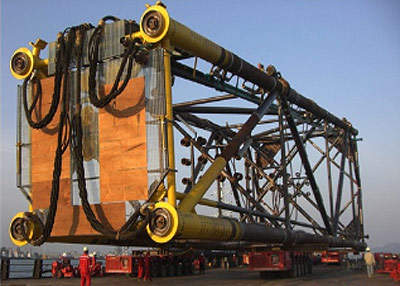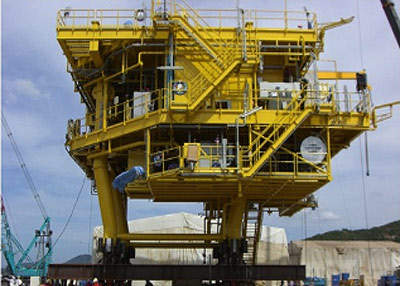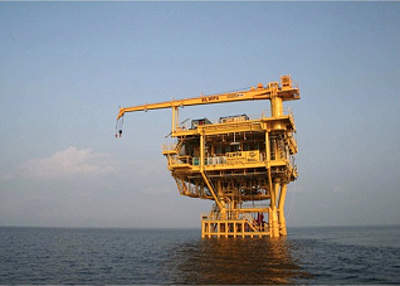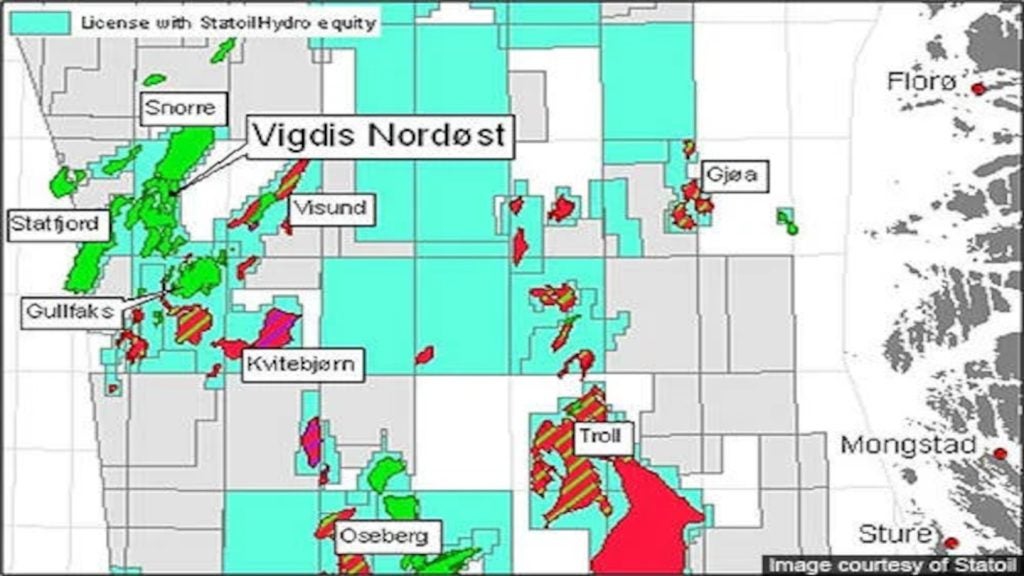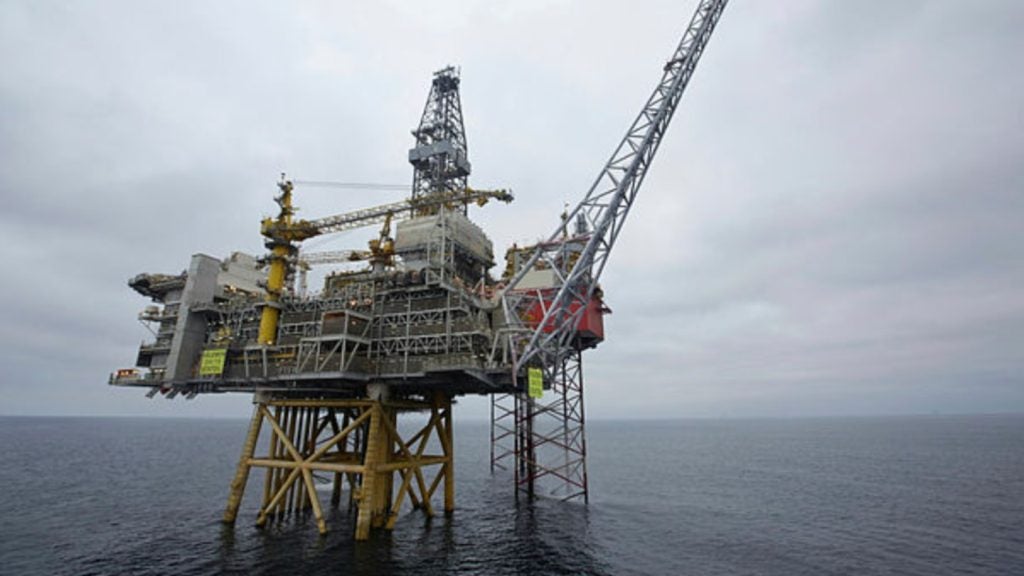The Bualuang field is located in the west of the Gulf of Thailand (block B8 / 38) in water depths of approximately 60m. It lies 60km west of the Chevron-operated gas / condensate and oil fields and Pearl Energy-operated Jasmine oilfield in the Pattani Trough.
The field is 100% owned and operated by UK-based Salamander Energy.
Its development, including facilities, drilling and completion, cost about $90m. The field came onstream in August 2008 and reached its maximum capacity of 17,000bpd a month later.
Discovery
The Bualuang field (originally called Pornsiri) was discovered in 1992 and subsequently appraised by two further wells in 1997.
The initial development wells, Bualuang 05 and 01, were drilled and logged to true vertical depths of 1,220m and 1,270m, respectively.
Preliminary evaluation of the well logs confirmed the wells encountered oil pay over a 25m gross interval (about 21m of net pay) and 23m gross interval (about 20m of net pay).
Bualuang 05 encountered an average porosity of 29% and average permeability of 809 millidarcies, while the 01 well (which was not cored) indicated an average porosity of 27%.
Bualuang geology and reserves
The Miocene age sandstones that form the Bualuang field reservoir are predominantly lacustrine and fluvial in character.
Gross proven reserves attributable to the field were originally estimated at 11MMboe, and gross proven and probable reserves were estimated at 20MMboe. In February 2011, Salamander revised the reserve estimates to 14MMboe of proven reserves and 27MMboe of proven and probable reserves.
There is further step-out exploration potential in the East Bualuang fault terrace, which is estimated to contain 7MMboe with upside potential of 14MMboe.
The Bualuang oil is about 27°API and has a low gas-to-oil ratio. The oil is ‘dead oil’, with a gas-to-oil ratio of 3scf/bbl. It therefore needs little processing, except for possible water-oil emulsion.
Development of the Bualuang field
The development plan for the Bualuang field was approved by the Thailand Department of Mineral Fuels in 2006. The development was fast-tracked during 2007. The construction phase was completed in late December and in January 2008 the jackets, topsides, pipelines and moorings for the field’s FPSO were installed by the Lewek Champion, which was chartered from Singapore-based Emas Offshore Construction and Production.
The first phase of development drilling has a total of six wells, including five producers and one water injector. These wells encountered the oil column in a reservoir of better quality than that predicted by the appraisal wells, with average porosities of more than 30% and an average net to gross of more than 92%.
The wells also found significantly greater oil saturation than the appraisal wells, and a field-wide oil-water contact has been established at 1,130m subsea.
The production wells, which were completed by June 2008, are fitted with gravel packs and Centrilift down-hole electrical submersible pumps, and have been hooked up via an 800m, 10in pipeline to Singapore-based Rubicon Offshore International’s Rubicon Vantage FPSO.
In March 2009, Salamander started the second phase of drilling programme at the field. The Emerald Driller rig was contracted to carry out the drilling activities. The rig drilled sidetracks to three existing production wells to convert them into horizontal production wells. The drilling programme was completed in May 2009. The three wells commenced production in the first half of 2010.
Salamander contracted the Ocean Sovereign jack-up rig to carry out further drilling activities at the field. The drilling programme commenced in February 2011 and will include the drilling of six development wells. Upon drilling of the wells, the rig will carry out exploration activities at the East Bualuang fault terrace.
FPSO Rubicon Vantage
The Nordic Trym shuttle tanker was converted into the Rubicon Vantage for use at the field. The FPSO features dynamic positioning and weighs 79,400t. It is 755ft long, 105ft wide and can store up to 570,000 barrels of oil. It is moored by a single mooring system at a depth of 197ft.
The FPSO’s oil processing capacity is up to 44,000bpd with a water-handling capacity of up to 20,000bpd, which can be increased to 30,000bpd.
Bualuang contracts
Engineering of the topsides and jackets was by WorleyParsons, of Australia, and they were built by Clough, also of Australia.

